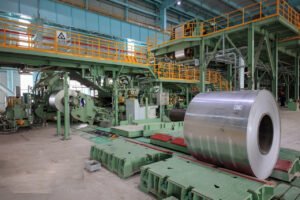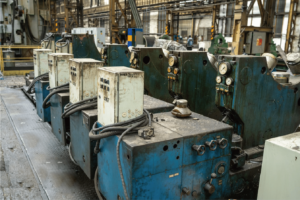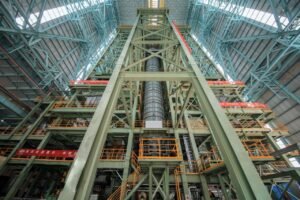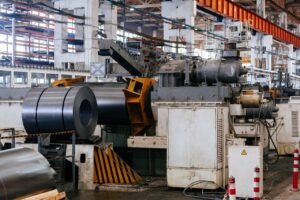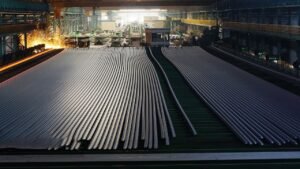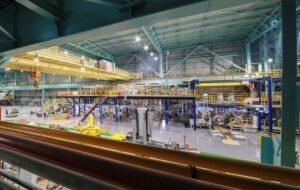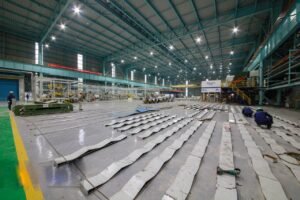304 vs 316 Stainless Steel: Cost & Corrosion Guide
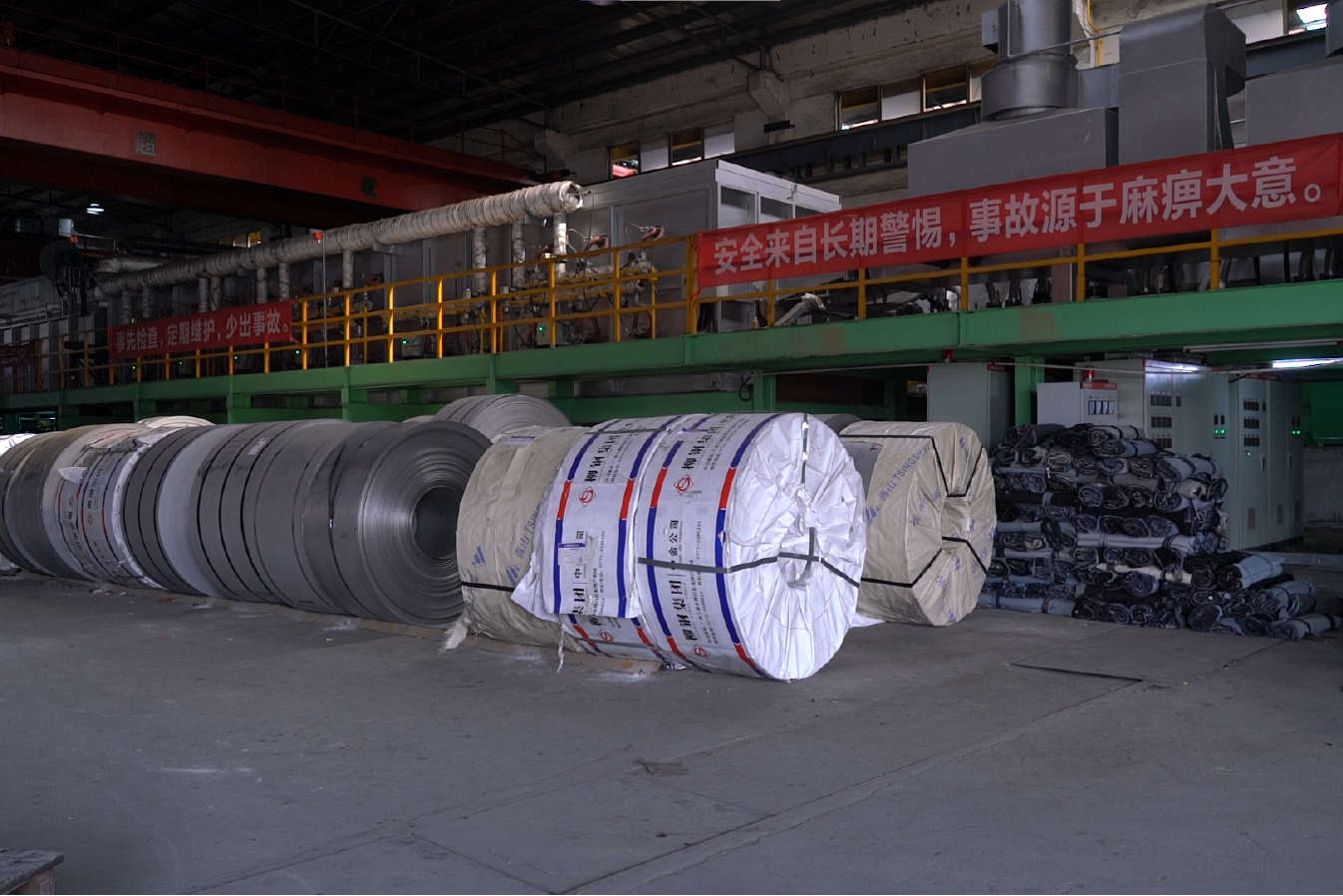
Are you struggling to choose the right stainless steel for your project? Making the wrong choice can lead to premature material failure from corrosion or unnecessary budget overruns. Understanding the critical differences between 304 and 316 stainless steel ensures you select the most durable and cost-effective option.
The fundamental difference between 304 and 316 stainless steel lies in their chemical composition and resulting corrosion resistance. Grade 316 contains molybdenum, which significantly enhances its ability to resist chlorides and other corrosive elements, making it ideal for harsh environments, albeit at a higher cost than the versatile 304 grade.
In my role at MFY, I’ve seen countless clients grapple with this exact decision. It's more than just comparing two grades on a spec sheet; it's about aligning material science with real-world applications and budgets. A choice that seems simple on the surface can have long-term implications for your project's integrity and financial success. Let’s explore these nuances together.
This decision isn't a simple case of "good versus better." The optimal choice is always relative to the specific application. Factors like surface finish, fabrication methods, and even cleaning protocols can influence a material's real-world performance just as much as its base composition. I recall a client in the food processing industry who was prepared to overspend on 316 for their entire facility. After a thorough analysis of their processes, we identified that 90% of their applications could be served more economically by 304 with a specific polished finish, saving them nearly 20% on material costs without compromising safety or quality. This is the kind of strategic partnership we foster at MFY, moving beyond mere supply to deliver true value.
What are the key differences between 304 and 316 stainless steel?
Confused by the technical data sheets when comparing stainless steel grades? This confusion often leads to specifying a material that is either excessive for your needs or, worse, inadequate for the operational environment. This can directly impact your project's longevity and financial viability. Let's clarify the fundamental distinctions.
The primary difference is the addition of molybdenum in 316 stainless steel, an element that 304 lacks. This gives 316 superior corrosion resistance, particularly against pitting and crevice corrosion caused by chloride ions, making it essential for marine, coastal, and certain chemical processing applications.
The presence of molybdenum is the headline difference, but its implications ripple through the material’s entire performance profile. This single elemental change affects everything from weldability and formability to, most notably, the final cost. Throughout my career, I've walked through countless client facilities, from immaculate food processing plants where 304 is the undisputed king, to rugged coastal desalination plants where only 316 can withstand the relentless assault of saltwater. The two metals can look identical to the naked eye, which is why a deeper, application-specific understanding is so critical. At MFY, we go beyond simply taking an order. We engage in a deep dialogue with our clients, from engineering contractors to equipment integrators, to ensure the steel they choose aligns perfectly with their operational environment, fabrication processes, and financial framework. It's about preventing future failures and optimizing current investments, a principle that underpins our entire approach to the global stainless steel supply chain. This consultative process is essential for navigating the subtle but significant trade-offs between these two workhorse grades of stainless steel.
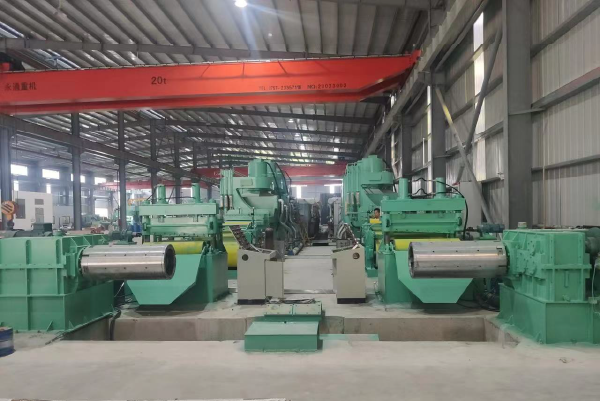
The choice between 304 and 316 stainless steel is one of the most common yet critical decisions in materials engineering. While they may appear similar, their underlying properties dictate their suitability for vastly different worlds. Understanding these differences is not just an academic exercise; it's a fundamental requirement for designing durable, reliable, and cost-effective products and infrastructure. As a supplier integrated across the entire stainless steel value chain, from raw materials to finished products, we at MFY have a unique perspective on how these material choices play out in the real world. We've seen the long-term success of projects where the choice was made thoughtfully, and the costly consequences of those where it was not.
Chemical Composition: The Molybdenum Advantage
At its core, the divergence between 304 and 316 is written in their chemical formulas. Grade 304, the most common stainless steel, is typically composed of 18% chromium and 8% nickel. This "18/8" composition is what gives 304 its characteristic corrosion resistance through the formation of a passive chromium-oxide layer on its surface. This layer is robust enough for a vast range of applications, from kitchen sinks to architectural panels in non-coastal areas. It provides excellent protection against most oxidizing acids, sterilizing solutions, and organic and inorganic chemicals.
Grade 316, however, introduces a key player: molybdenum. Its composition is typically around 16-18% chromium, 10-14% nickel, and, crucially, 2-3% molybdenum. This addition is a game-changer. Molybdenum significantly enhances the material's resistance to pitting and crevice corrosion, particularly in environments rich with chloride ions, such as seawater, de-icing salts, and brine solutions. I worked with an engineering contractor on a major bridge project in Southeast Asia where the initial specification called for 304 for decorative fixtures. We presented data showing the predicted rate of pitting corrosion due to the high-salinity coastal air, convincing them to upgrade to 316L. This change added a marginal cost upfront but prevented what would have been a catastrophic failure and multi-million dollar replacement effort within a decade.
The supporting cast of elements also matters. The slightly higher nickel content in 316 contributes to its enhanced formability and strength, especially at elevated temperatures. Furthermore, both grades have low-carbon variants, designated as 304L and 316L. The lower carbon content (typically below 0.03%) is critical for welded fabrications. It prevents the precipitation of chromium carbides at grain boundaries during the welding process, a phenomenon that can lead to intergranular corrosion and compromise the integrity of the welded joint. For any client involved in manufacturing tanks, vessels, or extensive piping systems, we almost always recommend the 'L' grade to ensure long-term structural reliability.
Mechanical Properties and Fabricability
From a purely mechanical standpoint, 304 and 316 stainless steels are quite similar, which can sometimes add to the selection challenge. They both exhibit excellent strength, toughness, and ductility. Their tensile strength, yield strength, and elongation properties are in the same ballpark, making them interchangeable in applications where mechanical performance is the primary concern and the environment is benign. However, 316 generally boasts slightly higher strength, particularly at elevated temperatures, giving it an edge in more demanding structural or high-heat applications.
The fabrication process is where subtle differences emerge. Both grades are readily formable and weldable using standard industry practices. However, because 316 is slightly stronger and tends to work-harden at a faster rate than 304, it can be more demanding on tooling and machinery. I recall a client, a manufacturer of high-end kitchen equipment, transitioning to 316 for a new product line designed to handle more aggressive cleaning agents. Their production team had to adjust their deep-drawing press settings and tooling materials to accommodate 316's different behavior, preventing issues like excessive die wear and springback.
This consideration extends to all fabrication processes, including welding. While both 316L and 304L are designed for optimal weldability, the heat input and cooling rates must be managed carefully to maintain the material's corrosion-resistant properties in the heat-affected zone (HAZ). At MFY, our technical support often involves advising clients on the best welding practices and filler materials for their specific application, ensuring that the fabricated component performs just as well as the base metal. This hands-on guidance is part of our commitment to being an integrated partner, not just a material vendor.
Surface Finish and Its Role in Performance
The conversation about corrosion resistance cannot be complete without discussing surface finish. The composition of the alloy is paramount, but the physical condition of its surface plays a critical role in its real-world performance. A smoother, less porous surface has fewer microscopic sites where corrosive elements like chlorides can accumulate and initiate pitting. A rough or poorly finished surface, conversely, can undermine the inherent corrosion resistance of even a superior alloy like 316.
This is a crucial point for cost-benefit analysis. For instance, a 304 stainless steel sheet with a highly polished, non-porous No. 8 mirror finish might temporarily outperform a 316 sheet with a rough, standard 2B mill finish in a mildly corrosive environment. The smoothness of the 304 surface prevents contaminants from gaining a foothold, delaying the onset of corrosion. This highlights the powerful synergy between material selection and manufacturing processes. It’s a detail we always stress to our clients in the architectural and food service industries, where aesthetics and cleanability are as important as durability.
This principle allows for value engineering. We once assisted a client, a large-scale distributor for building materials in the Middle East, who faced intense price pressure. Their customers wanted the perceived quality of 316 for indoor decorative elements, but the budget didn't allow for it. We developed a solution using 304 with an enhanced, specialized brushed finish. This finish provided superior resistance to fingerprints and staining compared to standard 304 and met the aesthetic requirements perfectly. By understanding and leveraging the role of surface finish, we delivered a product that met the application's true needs at a significantly lower cost, strengthening our client's competitive position.
| Недвижимость | Grade 304 Stainless Steel | Grade 316 Stainless Steel |
|---|---|---|
| Chromium (Cr) | 18-20% | 16-18% |
| Nickel (Ni) | 8-10.5% | 10-14% |
| Molybdenum (Mo) | Нет | 2-3% |
| Устойчивость к коррозии | Good for general atmospheric and chemical corrosion | Превосходно, especially against chlorides (pitting/crevice) |
| Общие приложения | Food equipment, kitchen sinks, architectural trim (inland) | Marine hardware, chemical processing, coastal infrastructure |
| Относительная стоимость | Нижний | Higher (due to Ni and Mo content) |
316 contains molybdenumПравда
316 stainless steel contains 2-3% molybdenum, which 304 lacks, giving it superior chloride resistance.
304 is always cheaperЛожь
While 304 is generally less expensive, polished 304 can cost more than standard 316 in some applications.
How do cost factors compare between 304 and 316 stainless steel?
Navigating project budgets is a constant challenge, and material selection is often a primary driver of cost. You might assume that choosing the cheaper material is always the best financial decision. However, this approach can lead to significant downstream expenses from maintenance, repairs, or premature replacement.
The primary cost difference stems from raw materials; 316 stainless steel is more expensive than 304 due to its nickel and, critically, molybdenum content. These alloying elements are costly commodities, making the initial purchase price of 316 typically 20-30% higher than that of 304.
This upfront price differential is a critical data point, but it's far from the whole story. As Global Business Director at MFY, I guide clients to look beyond the per-kilogram price and adopt a Total Cost of Ownership (TCO) perspective. A higher initial investment in 316 for a corrosive environment can yield substantial savings over the project's lifecycle. We've seen this play out time and again, where specifying 304 in an unsuitable location leads to replacement costs that are multiples of the initial savings. Conversely, over-specifying 316 where 304 would suffice is an unnecessary drain on capital. Our role at MFY is to provide not just the steel, but also the market intelligence and application expertise our clients need. This empowers them to make a financially sound decision that balances upfront costs with long-term performance and reliability, a cornerstone of building an efficient and resilient supply chain.
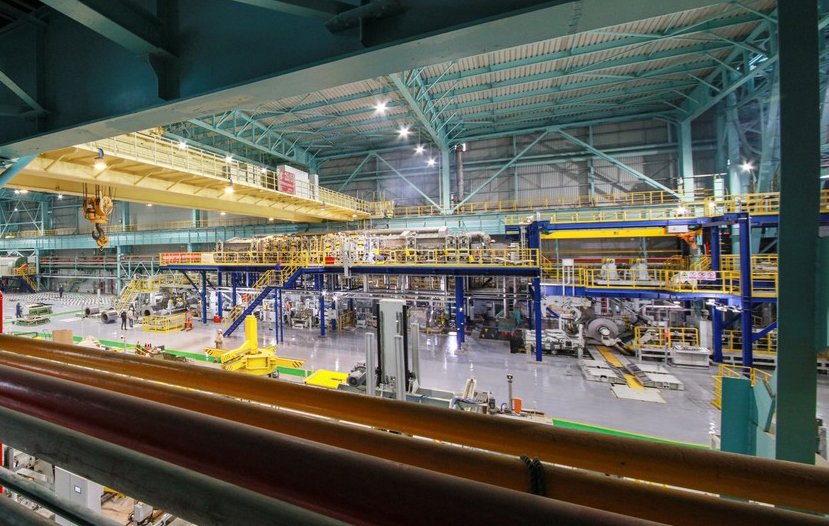
The financial calculation behind choosing 304 or 316 stainless steel is a multifaceted issue that extends far beyond the price on an invoice. It involves understanding volatile commodity markets, calculating the long-term lifecycle costs of an asset, and recognizing how supply chain dynamics can influence both price and availability. At MFY, our integrated position—spanning raw material trading to rapid export delivery—gives us a panoramic view of these factors. We help our clients, from large-scale construction contractors to specialized equipment integrators, navigate this complex financial landscape. The goal is to transform the cost comparison from a simple price check into a strategic financial decision that underpins the profitability and sustainability of their projects.
Raw Material Costs: The Nickel and Molybdenum Premium
The most direct and significant factor driving the price difference between 304 and 316 is the cost of their constituent alloying elements. Both grades are priced based on the underlying costs of iron, chromium, and nickel, but 316 has two key elements that command a premium: a higher percentage of nickel and the addition of molybdenum. Nickel and molybdenum are traded on global commodity markets, and their prices can be highly volatile, subject to geopolitical events, mining output, and global demand. Molybdenum, in particular, is a crucial and costly additive1 that is directly responsible for 316's enhanced corrosion resistance.
This "moly premium" means that the price of 316 stainless steel will almost always be substantially higher than that of 304. The gap can fluctuate, but a price difference of 20-40% is a reliable benchmark. For a large-scale project, such as outfitting a chemical processing plant or constructing a coastal high-rise, this initial cost difference can translate into millions of dollars. As a major player in stainless steel raw material trading in China, MFY constantly monitors these market dynamics. We provide our clients with up-to-date pricing trends and forecasts, enabling them to make purchasing decisions at the most opportune times and manage their budgets more effectively.
It's not just about the raw price, but also about the stability of that price. Because 316's cost is tied to more volatile commodities, its price can fluctuate more dramatically than 304's. This is a critical risk factor for contractors working on long-term projects with fixed budgets. Our strong production capacity and extensive inventory allow us to hedge against some of this volatility, offering our clients more stable, long-term pricing agreements that bring predictability to their financial planning.
Lifecycle Cost Analysis: Beyond the Initial Purchase
A truly astute financial analysis looks beyond the initial procurement cost and considers the total cost of ownership (TCO) over the asset's entire lifecycle. This is where 316 stainless steel often reveals its true value proposition. While its upfront cost is higher, in the correct application, it can be the far more economical choice over the long term. Consider a piping system for a manufacturing facility that uses mildly corrosive chemicals. Specifying 304 might save 30% on the initial material cost. However, if that system begins to show signs of pitting corrosion after five years, it will require costly repairs, downtime, and eventual replacement within 10-15 years.
In contrast, specifying 316 from the outset might have increased the initial budget, but it would create a system designed to last for 30 years or more with minimal maintenance. The savings from avoiding repair costs, lost production during downtime, and the full cost of a premature replacement would vastly outweigh the initial premium paid for the 316 material. I worked with an equipment integrator for the dairy industry who faced this choice. We performed a lifecycle cost analysis together, modeling the cost of biannual inspections and potential replacement of 304 components versus the "install and forget" reliability of 316L. The TCO model clearly showed a break-even point at year seven, making 316 the clear winner for their 20-year design life.
This TCO perspective is fundamental to a sustainable business strategy. It shifts the decision from a simple expense to a long-term investment. At MFY, we encourage our clients to think like asset managers, providing them with the data and case studies they need to justify a higher upfront investment that will protect their operations and profitability for decades to come.
Supply Chain and Market Dynamics
The cost and availability of 304 and 316 are also influenced by global supply chain dynamics and production volumes. Grade 304 is the most widely produced and used stainless steel in the world. This high volume leads to greater efficiency in production and a more competitive, liquid market. It is readily available from numerous mills and distributors globally, including our extensive inventory at MFY. This widespread availability generally ensures competitive pricing and shorter lead times.
Grade 316, while common, is more of a specialty product compared to 304. Its production volumes are lower, and not every mill produces a full range of 316 products. This can sometimes lead to longer lead times and less price competition, particularly for less common sizes or finishes. For clients in our key export markets like India and Southeast Asia, ensuring a reliable supply of 316 is a major concern. This is where MFY's competitive strength in having a fully integrated supply chain becomes a critical advantage for our clients.
Our direct integration with production mills, coupled with our large-scale warehousing and rapid export capabilities, allows us to mitigate many of these supply chain risks. We can secure production slots, maintain a deep inventory of both 304 and 316 products (coils, sheets, and pipes), and ensure that our clients receive their materials on time, regardless of market fluctuations. This reliability allows our clients, whether they are distributors or construction contractors, to manage their own inventories more efficiently and commit to project timelines with confidence, knowing their stainless steel supply is secure.
316 contains molybdenumПравда
The enhanced corrosion resistance of 316 comes from its 2-3% molybdenum content, which 304 lacks.
304 is always cheaperЛожь
While 304 typically costs less initially, its total ownership cost may exceed 316 in corrosive environments due to maintenance and replacement expenses.
What are the corrosion resistance properties of 304 stainless steel?
You're looking for a reliable, cost-effective material for your project, and 304 stainless steel is on your list. You know it's the industry workhorse, but you're worried about its limits. Choosing it for the wrong environment could lead to rust, structural failure, and costly damage.
304 stainless steel offers excellent corrosion resistance in a wide range of atmospheric and mildly corrosive environments. Its 18% chromium content forms a durable, passive chromium oxide layer that protects it from oxidation, most organic and inorganic acids, and sterilizing solutions found in food processing.
However, this protection has its limits. In my experience, the most common failure mode for 304 is pitting and crevice corrosion2 when exposed to chloride-rich environments, such as coastal air or de-icing salts. We always advise clients to carefully assess the specific chemical exposures their project will face. For many applications, from indoor architectural features to food and beverage tanks, 304 provides more than enough protection, making it the smart, economical choice. Understanding this balance is key to leveraging 304's strengths effectively without pushing it beyond its well-defined limits.
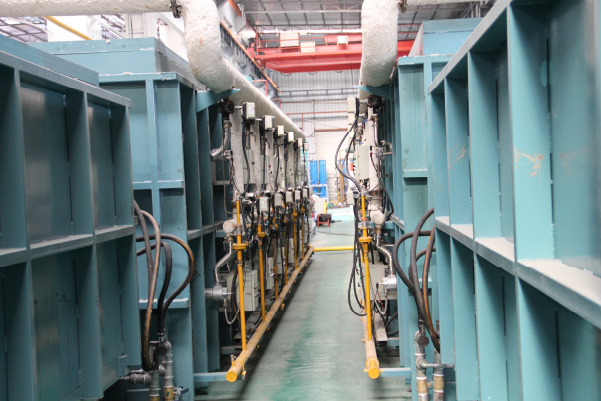
Grade 304 stainless steel is the backbone of the modern world, found in everything from the cutlery we eat with to the gleaming facades of city skyscrapers. Its popularity is no accident; it stems from a remarkable and reliable ability to resist degradation in a wide variety of environments. This resistance is not absolute, however, and understanding its specific properties—both its strengths and its vulnerabilities—is crucial for any engineer, fabricator, or designer. At MFY, our deep involvement in the entire stainless steel lifecycle, from production to application, has given us profound insight into how 304 performs under real-world conditions. We've seen its incredible durability when applied correctly and its surprising fragility when its limits are ignored.
The Power of the Passive Layer: How 304 Resists General Corrosion
The magic behind 304's resilience lies in a microscopic phenomenon known as passivation. The high chromium content (a minimum of 18%) in the alloy reacts with oxygen in the air or water to form a very thin, inert, and tenacious layer of chromium oxide ($Cr_2O_3$) on the surface of the steel. This passive layer is only a few nanometers thick, yet it acts as a powerful shield, instantly isolating the iron in the steel from the surrounding environment and preventing the oxidation process we know as rust. What makes this layer so effective is its self-healing nature; if the surface is scratched or damaged, a new passive layer forms almost instantaneously as long as oxygen is present.
This robust passive film is why 304 performs exceptionally well against general atmospheric corrosion. It's the reason it's used so extensively for outdoor sculptures, building facades, and architectural trim in most inland locations. Furthermore, it stands up remarkably well to a wide range of chemicals. In the food and beverage industry, a major market for MFY, 304 is the material of choice for tanks, piping, and preparation surfaces. It is unaffected by the acids found in fruits, meats, and vegetables, and it can be easily cleaned and sterilized with various chemicals without degrading, ensuring hygienic conditions.
For example, a major brewery client in Southeast Asia relies exclusively on our 304L stainless steel sheets and pipes for their fermentation vessels and transfer lines. The material must withstand not only the slightly acidic nature of beer but also the aggressive, high-temperature caustic cleaning cycles. The 304L grade provides the perfect balance of corrosion resistance and cost-effectiveness for this application, ensuring product purity and a long service life for their equipment.
Understanding 304's Limitations: Vulnerability to Chlorides
Despite its versatility, the passive layer of 304 stainless steel has an Achilles' heel: chloride ions ($Cl^-$). Chlorides are aggressive and can locally break down the passive film, preventing it from reforming. This leads to a highly localized form of corrosion known as pitting. Pitting is insidious because it can be difficult to detect, starting as microscopic holes on the surface that can penetrate deep into the material, eventually causing structural failure. This is why using 304 in or near marine environments is a significant risk. The salt spray from the ocean, rich in sodium chloride, will inevitably lead to unsightly rust staining and pitting.
Another closely related issue is crevice corrosion. This occurs in tight spaces where oxygen is restricted, such as under bolt heads, in gasket joints, or within threaded connections. In these crevices, chloride concentrations can build up to a critical level, and the lack of oxygen hinders the self-healing of the passive layer. This creates a highly corrosive micro-environment where the steel can be rapidly attacked. I once consulted on a project for a distributor whose client had used 304 fasteners for a coastal boardwalk. Within two years, significant corrosion was visible around the washers and bolt heads, a classic case of crevice corrosion that compromised the safety of the structure and required a complete, costly replacement with 316-grade hardware.
This vulnerability extends beyond coastal areas. De-icing salts used on roads in colder climates can create a corrosive slush that splashes onto vehicles and structures. Many industrial chemicals, particularly those involving hydrochloric acid or bleach (sodium hypochlorite), also contain high levels of chlorides and are incompatible with 304. Recognizing these environmental triggers is the most important step in avoiding material failure.
Mitigating Corrosion Risks in 304 Applications
While 304 has clear limitations, its performance can be optimized through smart design and proper maintenance, extending its service life even in moderately challenging conditions. For fabricators and engineers, the first step is proper design. This means designing components to avoid tight crevices where water and chlorides can accumulate. Welded joints should be smooth and continuous, and designs should promote drainage rather than allowing water to pool on the surface.
Regular cleaning is another critical factor. In architectural applications, periodic washing to remove salt deposits, dirt, and other pollutants can significantly prolong the life and appearance of 304 stainless steel. A client in the transportation sector uses our 304 sheets for the paneling of their buses. Part of their maintenance protocol, which we helped them develop, includes a specific wash-down schedule that prevents the buildup of road grime and salts, keeping the panels pristine for years. This simple, low-cost procedure effectively expands the usable range of 304.
ly, selecting the right variant and finish is crucial. As mentioned, using the low-carbon 304L version for any welded assembly is essential to prevent intergranular corrosion. Additionally, opting for a smoother, more polished surface finish can enhance corrosion resistance by minimizing the microscopic sites for pits to initiate. At MFY, we offer a wide range of finishes and can advise clients on which one provides the best protection for their specific application, ensuring they get the maximum performance out of this incredibly versatile and economical material.
304 resists food acidsПравда
The chromium oxide layer protects 304 stainless steel from organic acids found in food processing environments.
304 is marine-gradeЛожь
304 is vulnerable to chloride-induced pitting corrosion and not suitable for prolonged marine exposure without special protection.
How does 316 stainless steel perform in terms of corrosion resistance?
You're facing a harsh environment—seawater, chemicals, or high salinity—and material failure is not an option. You need a stainless steel grade you can trust, but you need to be certain its performance justifies the higher cost. An incorrect specification could be disastrous for safety and longevity.
316 stainless steel offers substantially enhanced corrosion resistance compared to 304, primarily due to its molybdenum content. This element provides superior defense against pitting and crevice corrosion caused by chlorides, making it the standard for marine, chemical processing, and pharmaceutical applications.
This enhanced protection is not just a marginal improvement; it's a fundamental shift in capability. I’ve seen 316 thrive in coastal power plants and chemical tankers where 304 would fail in months. The molybdenum actively helps rebuild the protective passive layer in the presence of chlorides, ensuring long-term integrity in environments that would destroy lesser materials. This reliability is why 316 is often a non-negotiable requirement in critical industries where safety and durability are paramount.
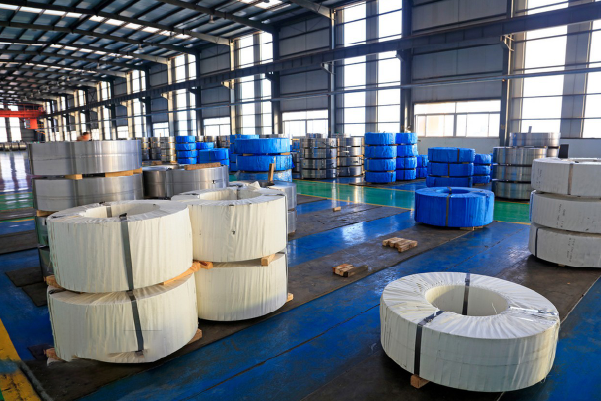
When the operational environment moves from benign to aggressive, grade 316 stainless steel steps into the spotlight. It represents a significant leap in corrosion resistance, specifically engineered to withstand chemical attacks that would compromise grade 304. This superior performance is not a matter of chance; it is a direct result of targeted alloy design. As a key partner to manufacturing companies and engineering contractors in demanding sectors, we at MFY have seen firsthand how 316's robust properties provide the long-term reliability necessary for critical infrastructure and equipment. Its performance in these settings is a testament to the power of small changes in chemistry to deliver massive gains in durability.
Molybdenum's Role in Resisting Pitting and Crevice Corrosion
The defining feature of 316's corrosion resistance is molybdenum. While chromium provides the primary passive layer, molybdenum acts as its powerful defender3, particularly against chloride-induced pitting and crevice corrosion. The mechanism is twofold: First, molybdenum that has dissolved in the steel matrix enhances the stability and toughness of the passive film itself, making it more difficult for chloride ions to break it down. Second, and perhaps more importantly, molybdenum products can accumulate within pits as they begin to form, inhibiting further corrosion and promoting repassivation, the rebuilding of the protective layer.
This enhanced capability can be quantified using the Pitting Resistance Equivalent Number (PREN4), a formula calculated from the steel's chemical composition ($PREN = \%Cr + 3.3 \times \%Mo + 16 \times \%N$). A standard 304 grade has a PREN of about 18-20, while a 316 grade typically has a PREN of 22-27. This higher number provides a scientific basis for 316's superior resistance to localized corrosion. In practical terms, this means that in a chloride-containing environment, 316 will resist the initiation of pitting at much higher temperatures and chloride concentrations than 304.
This scientific advantage translates into real-world reliability. A distributor we work with in the Middle East supplies materials for coastal construction projects. They switched exclusively to MFY's 316L stainless steel rebar for concrete reinforcement in high-rise buildings within 5km of the coast. Although more expensive, this choice prevents chloride-induced corrosion of the rebar, which is a primary cause of concrete spalling and structural failure in marine environments, thereby ensuring the 100-year design life of these iconic buildings.
Superior Performance in Aggressive Chemical Environments
Beyond its resistance to chlorides, 316 stainless steel also exhibits superior performance in the face of a broader range of aggressive chemicals. This makes it an essential material in the chemical processing, pulp and paper, and pharmaceutical industries. It shows excellent resistance to sulfuric acid compounds, phosphoric acid, acetic acid, and fatty acids, especially at elevated temperatures where 304 would quickly corrode. The combination of higher nickel content and molybdenum makes it more stable in these reducing acid environments.
Many industry standards explicitly mandate the use of 316 or higher alloys for these applications. For instance, in pharmaceutical manufacturing, equipment must be completely inert and resistant to corrosion from both the products being made and the harsh cleaning agents used to maintain sterility. I recall working with an equipment integrator building bioreactors for a new pharmaceutical plant. The project specifications strictly required 316L for all product-contact surfaces. Our ability to supply high-purity 316L stainless steel pipe and sheet with complete material traceability was crucial for them to meet the stringent validation requirements of regulatory bodies like the FDA.
Similarly, in the pulp and paper industry, the process involves numerous corrosive chemicals, including sulfur compounds and chlorides. 316 is the workhorse material for digesters, bleaching equipment, and stock handling systems. Its ability to withstand this complex chemical cocktail prevents both equipment failure and contamination of the product, making it indispensable to the industry.
Case Study: Marine Infrastructure in Southeast Asia
To illustrate the critical importance of 316, consider a recent MFY project supplying materials for a new desalination plant in a rapidly growing coastal city in Southeast Asia. The plant operates by drawing in seawater, a highly corrosive fluid due to its salinity (around 35,000 ppm chlorides) and biological activity. The entire system, from intake pipes to high-pressure reverse osmosis skids and brine discharge lines, is in constant contact with this aggressive medium, often at elevated pressures and temperatures. For this application, 304 stainless steel would have a service life measured in months, not years.
Our team worked closely with the lead engineering and construction contractor to specify and supply 316L stainless steel pipes and plates for all wetted components. The "L" grade was essential due to the extensive welding required to fabricate the complex piping network, preventing any risk of intergranular corrosion at the welds. The molybdenum in the 316L provided the necessary resistance to pitting from the high-chloride seawater, while the higher nickel content ensured good fabricability and toughness.
The initial material investment in 316L was significantly higher than if they had attempted to use a lesser material. However, this choice was fundamental to the plant's viability. It ensured a design life of over 30 years with predictable, minimal maintenance. By providing a reliable supply of certified 316L, complete with rapid export delivery to meet the project's tight construction schedule, MFY played a vital role in bringing a critical source of fresh water to the region. This case perfectly demonstrates that for marine infrastructure, 316 is not a luxury; it is an essential engineering requirement.
316 has better corrosion resistance than 304Правда
316 stainless steel contains molybdenum which significantly improves its resistance to pitting and crevice corrosion compared to 304.
304 is suitable for marine environmentsЛожь
304 stainless steel lacks sufficient molybdenum content to withstand chloride-rich marine environments, where 316 is the standard choice.
When is it best to choose 304 or 316 stainless steel?
Facing the choice between 304 and 316 can feel daunting. You want to be cost-conscious, but you can't afford the risk of material failure. Selecting a material that is overkill wastes money, while choosing one that is inadequate can lead to safety hazards and catastrophic replacement costs.
The decision hinges on a single question: what is the specific corrosive environment? Choose 304 for general-purpose applications with exposure to freshwater, food products, and normal atmospheric conditions. Choose 316 when the application involves seawater, de-icing salts, or aggressive industrial chemicals.
In my experience at MFY, the best choice is always the one that is "fit for purpose." It's about matching the material's capabilities to the demands of the environment. A careful, honest assessment of your application's needs is the most effective way to make a decision that is both technically sound and financially prudent. It’s a process we guide our clients through every day, ensuring they invest wisely for long-term success.
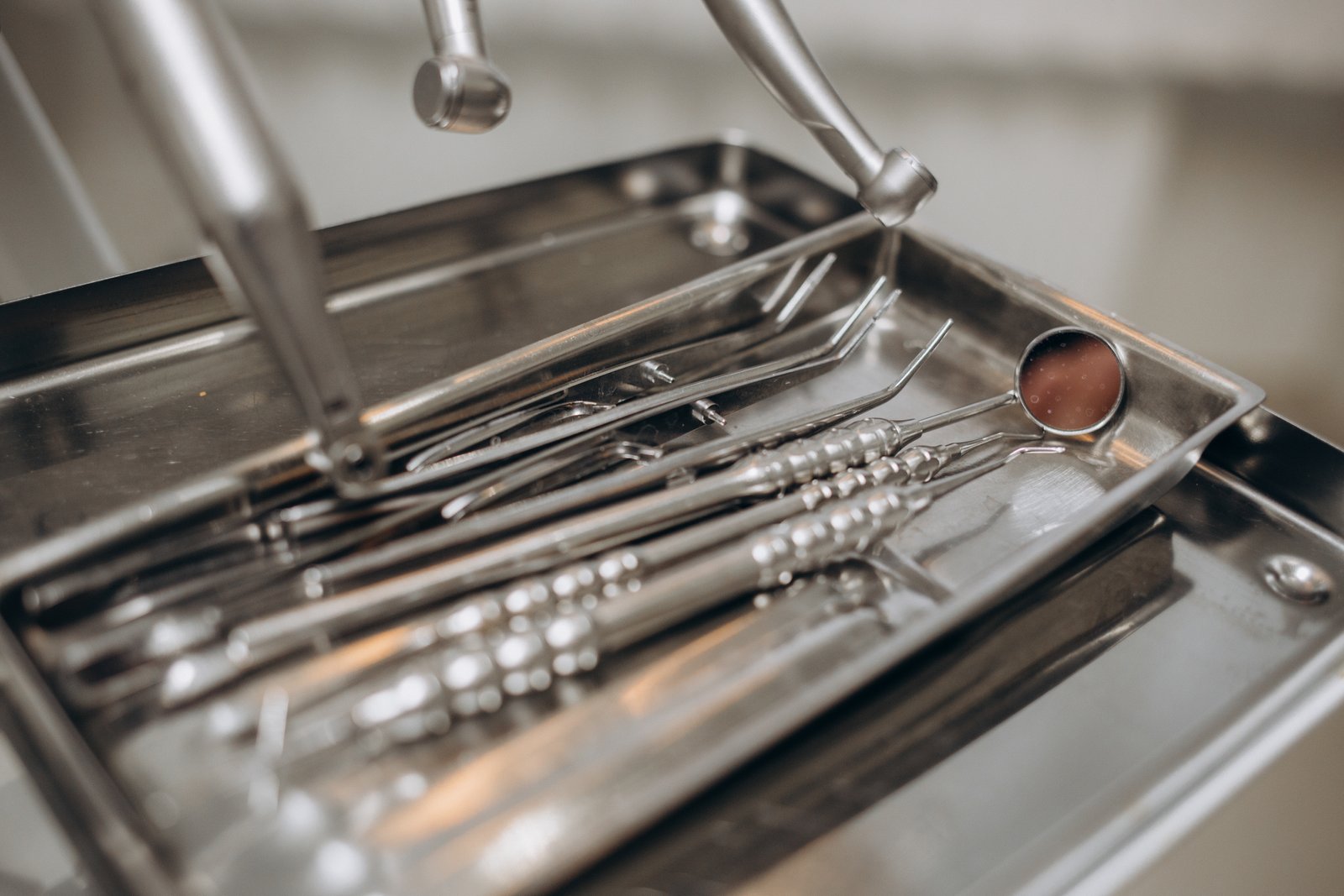
The final decision between 304 and 316 stainless steel is a strategic one that balances performance requirements against budgetary realities. There is no universal "best" choice, only the "right" choice for a specific context. Making this decision correctly is a hallmark of excellent engineering and smart procurement. It prevents both wasteful over-engineering and dangerous under-engineering. At MFY, our vision is to be more than a supplier; we aim to be a partner in this decision-making process. By leveraging our deep product knowledge and understanding of our clients' industries, we help them navigate this choice with clarity and confidence, ensuring every meter of steel we deliver is perfectly suited for its intended purpose.
The Ideal Scenarios for 304 Stainless Steel
Grade 304 stainless steel earns its title as the industry workhorse because of its incredible versatility and cost-effectiveness in a vast array of common applications. Its selection is the default, smart choice when severe corrosive conditions, particularly those involving chlorides, are not present. The driving factor for choosing 304 is its ability to provide more than adequate performance at a significantly lower price point than 316.
Ideal applications for 304 are plentiful. In the food and beverage industry, it is the standard for storage tanks, processing vats, pipes, and preparation surfaces that handle everything from milk and beer to vegetables and grains. Its excellent cleanability and resistance to food acids make it perfect for these hygienic environments. In architecture, 304 is used extensively for indoor decorative features, elevator panels, handrails, and outdoor cladding and trim in inland areas where salt exposure is not a concern. Its bright, clean aesthetic combined with its durability makes it a favorite among architects and designers.
Furthermore, 304 is the go-to material for a wide range of consumer and industrial products. This includes kitchen appliances, sinks, cutlery, automotive exhaust components, and general-purpose tubing for structural and fluid transfer applications. For a manufacturing company producing equipment for these markets, choosing 304 allows them to deliver a durable, corrosion-resistant product while maintaining a competitive price point. The key is a clear understanding that the product will not be regularly exposed to salt or other aggressive chemicals.
Non-Negotiable Applications for 316 Stainless Steel
While 304 is versatile, there are specific environments where choosing 316 stainless steel is not just recommended, but absolutely essential. In these scenarios, the drivers for selection are not cost savings, but safety, regulatory compliance, and long-term asset integrity. Attempting to substitute 304 in these applications is a recipe for premature and often catastrophic failure.
The most prominent non-negotiable application is any equipment exposed to seawater or coastal salt spray. This includes all marine hardware (shackles, cleats, railings), offshore oil and gas platforms, coastal architecture, and desalination equipment. The high chloride content of seawater will aggressively attack 304, but 316, with its molybdenum content, is specifically designed to resist it. A client of ours, an engineering firm specializing in marina construction, uses MFY's 316L pipes and structural components exclusively. For them, the material's reliability is a matter of public safety and professional reputation.
The chemical processing and pharmaceutical industries are other domains where 316 is often mandatory. Equipment used to manufacture or store aggressive chemicals, solvents, and acids requires the superior resistance of 316 to prevent dangerous leaks and product contamination. Similarly, in biomedical applications, 316L is used for surgical implants and tools because of its high purity and excellent biocompatibility and corrosion resistance within the human body. In these fields, industry regulations and international standards often explicitly forbid the use of 304 for critical components, making 316 the only compliant choice.
A Strategic Decision Framework: Asking the Right Questions
To move beyond a simple comparison and make a truly strategic choice, you must ask a series of diagnostic questions. This is the framework we use at MFY to guide our clients to the optimal solution. It transforms the decision from a guess into a logical conclusion based on data and a clear understanding of risk. Before you decide, consider the following:
First, what are the specific corrosive agents and their concentrations? Be precise. Is it just atmospheric humidity, or is it salt spray, chlorine-based cleaners, sulfuric acid, or de-icing salt? The specific chemical agent is the single most important factor. Second, what is the operating temperature? Corrosion rates often accelerate dramatically with increasing temperature. An environment that is safe for 304 at room temperature might require 316 at 60°C.
Third, what is the required service life and what are the consequences of failure? Is this a decorative panel that would be inexpensive to replace, or a critical pressure vessel where failure could be catastrophic? A longer required lifespan and higher failure consequence strongly argue for the more robust material. ly, what are the design and maintenance protocols? Will the design have crevices where corrosives can concentrate? Will the component be cleaned regularly to remove deposits? A well-designed, well-maintained part made from 304 can sometimes outperform a poorly designed 316 part. By methodically answering these questions, you can confidently select the material that provides the perfect balance of performance, cost, and reliability for your project.
304 is ideal for food processingПравда
304 stainless steel is widely used in food processing due to its resistance to food acids and easy cleanability.
316 can be replaced by 304 in marine environmentsЛожь
316's molybdenum content makes it essential for seawater exposure; 304 would corrode rapidly in such conditions.
Заключение
Ultimately, the 304 vs. 316 decision balances cost against the specific threat of corrosion. 304 is the versatile, economical standard for most applications, while 316 provides essential, non-negotiable protection in harsh chloride and chemical environments. A strategic choice is key to optimizing your project's budget and performance.
-
Understand molybdenum's impact on the durability of 316 stainless steel ↩
-
Learn how to prevent crevice corrosion in 304 stainless steel applications and prolong material lifespan ↩
-
Learn about molybdenum's activity against chloride-induced corrosion ↩
-
Understand the significance of PREN in stainless steel's corrosion resistance ↩
У вас есть вопросы или нужна дополнительная информация?
Свяжитесь с нами, чтобы получить индивидуальную помощь и квалифицированный совет.

